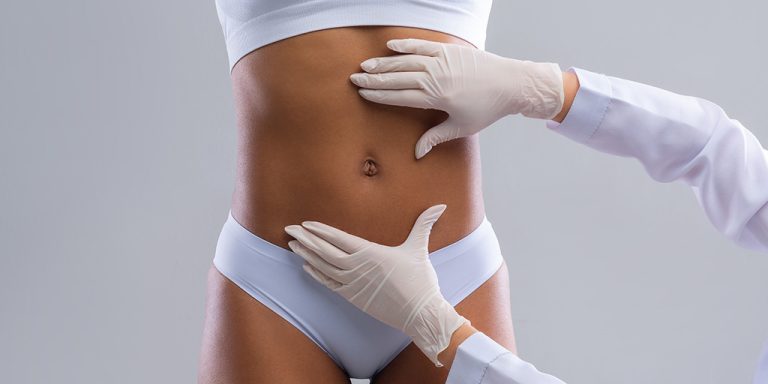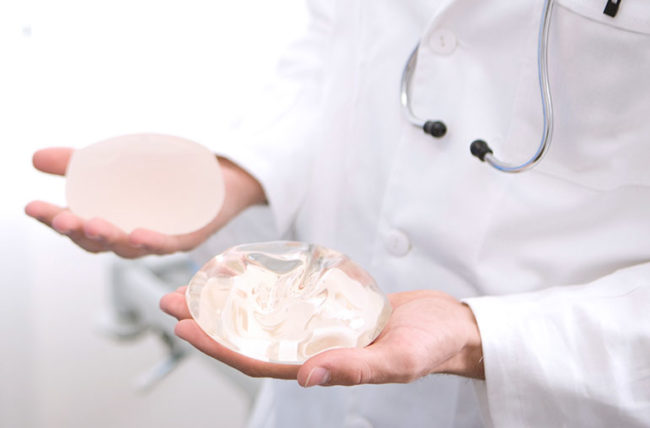Sculpt, Recover, Repeat: Navigating Various Body Contouring Methods and Optimal Recovery Practices
Posted on: December 13, 2023
Body sculpting has morphed from ancient practices to today’s high-tech procedures such as SculpSure and laser lipo, offering a dual punch of fat reduction through lipolysis and body contouring with technologies like UltraShape. Once the privilege of the operating table, sculpting various body parts now spans a spectrum from the scalpel to sound wave devices, offering patients non-invasive fat removal options. The modern body sculpting procedure, aimed at fat removal, is an art form, meticulously chiseling away at unwanted bulges with surgical precision or melting them down through non-invasive means such as plasma devices, ensuring patient comfort and safety. It’s about reshaping various body parts, enhancing patient care, integrating devices for self-improvement, and not just skin and tissue but also the efficacy of treatments and public perception of beauty. As we peel back the layers of time, it’s clear that the patient quest for physical perfection continues to evolve, enhancing the efficacy of body refinement and making it more accessible than ever, like the use of plasma in treatments.
Exploring Comprehensive Body Sculpting Methods
Body sculpting has evolved, offering a variety of techniques to shape and tone the body, including plasma technology for patient treatments. Personalized plans for body parts and plasma technology play key roles in this evolution.
Catalog of Techniques
The world of body sculpting is vast, with options for nearly every need. Some popular methods include:
- Liposuction: This surgical procedure removes fat from various body parts.
- CoolSculpting: A non-invasive technique that freezes and destroys fat cells.
- Laser lipolysis: Uses laser energy to target fat deposits.
- Radiofrequency treatments: Heat fat cells to reshape areas of the body.
Each method has its own benefits and suits different goals. For example, someone looking to remove a small amount of stubborn fat may opt for CoolSculpting. On the other hand, larger areas might be better served by liposuction.
Personalized Treatment Plans
No two bodies are alike; hence bespoke treatment plans are essential. A consultation with a professional helps determine which technique matches your needs. They consider:
- The specific body parts you want to target.
- Your overall health and medical history.
- Desired outcomes and expectations.
A tailored plan not only ensures safety but also maximizes results. It’s like having a custom-made suit versus one off-the-rack—it just fits better.
Technology Advancement Role
Advancements in technology have revolutionized body sculpting methods. New techniques are more efficient, less invasive, and offer quicker recovery times. Examples include:
- High-intensity focused ultrasound (HIFU) for targeted fat reduction.
- Cryolipolysis advancements improving CoolSculpting efficacy.
With each technological leap, treatments become more accessible and comfortable for patients.
In-Depth Guide to Liposuction and Its Varieties
Liposuction has evolved with new techniques that improve results and recovery. Understanding the different types can help you choose the best option for your body sculpting goals.
Traditional Liposuction Explained
Traditional liposuction is a well-known fat removal method. It involves making small incisions, inserting a tube called a cannula, and using suction to remove fat from specific areas of the body. This technique targets stubborn fat deposits that diet and exercise can’t eliminate.
The process relies on the skill of the surgeon who manually breaks up the fat before suctioning it out. It’s effective but can be more invasive than newer methods.
Tumescent Technique
Tumescent liposuction offers less bleeding during surgery. A solution is injected into fatty tissues before removal, causing them to swell (tumesce) and become firmer. This makes it easier to remove fat with precision.
The solution also contains anesthetic and substances that constrict blood vessels, reducing pain and minimizing blood loss. Many consider tumescent liposuction safer than traditional methods due to these improvements.
Ultrasound-Assisted Option
Ultrasound-assisted liposuction (UAL) uses sound waves to liquefy fat cells before removal. This technique allows for easier extraction of fat from dense areas like the back or male breast tissue.
UAL can be particularly beneficial when dealing with large volumes of fat or fibrous areas. The ultrasound energy helps break down tough fatty deposits more effectively than manual techniques alone.
Laser-Assisted Variation
Laser-assisted liposuction (LAL) employs laser energy to dissolve fat cells prior to their removal via suction. The heat from the laser also stimulates collagen production, which may lead to tighter skin post-surgery.
This method tends to cause less swelling and bruising compared to traditional liposuction, leading to a quicker recovery time for many patients.
Choosing Your Liposuction Type
Selecting the right type of liposuction depends on various factors:
- The area being treated
- The volume of fat being removed
- Your personal health history
- Desired recovery time
Consult with a board-certified plastic surgeon who understands how these factors influence outcomes in body sculpting procedures.
They will assess your individual needs against what each method offers, ensuring you get optimal results while maintaining safety throughout your journey towards a contoured physique.
Non-Invasive Body Sculpting Alternatives
After exploring liposuction, let’s shift focus to non-invasive body sculpting. These treatments offer fat reduction without surgery.
Popular Non-Invasive Treatments
CoolSculpting and SculpSure lead the pack in non-invasive body contouring. They use cold and heat, respectively, to break down fat cells. Your body then naturally removes these cells.
CoolSculpting targets fat by freezing it, a process known as cryolipolysis. SculpSure uses laser technology to heat and disintegrate fat cells.
Benefits Over Surgery
Non-invasive options have several advantages over surgical methods like liposuction. Here are some key benefits:
- Safety: Lower risk of complications compared to invasive surgery.
- Convenience: Procedures typically take under an hour with no downtime.
- Comfort: Most patients experience minimal discomfort during treatment.
- Cost: Generally less expensive than their surgical counterparts.
These procedures are ideal for those seeking improvements without the risks or recovery time associated with surgery.
Results Timeline
Results from non-invasive treatments vary by individual. However, there’s a common timeline you can expect:
- Initial Changes: Some notice changes as early as three weeks post-treatment.
- Visible Results: Optimal results usually appear after two months.
- Continued Improvement: The body keeps flushing out fat cells for up to six months.
Patience is key; full benefits aren’t immediate but develop over time.
Cryolipolysis and Low-Level Laser Therapy in Fat Reduction
Cryolipolysis freezes fat cells, causing their destruction. Low-level laser therapy safely targets fat deposits, enhancing fat loss.
Cryolipolysis Mechanism
Cryolipolysis stands out as a non-invasive treatment for stubborn fat. This procedure is often known as “fat freezing”. It uses cold treatments to target and eliminate fat cells. The process involves cooling fat deposits to a temperature that destroys them without harming the skin or surrounding tissues.
The destroyed fat cells are then naturally processed by the body’s lymphatic system. Over time, this results in a reduction of the treated area’s thickness. Patients typically see full results within one to three months after treatment.
Laser Therapy Efficacy
Low-Level Laser Therapy (LLLT), also called laser lipo, employs laser energy to tackle excess fat. Unlike traditional liposuction, LLLT is non-invasive. It uses specific wavelengths of light to penetrate the skin and target fatty tissues.
The laser heat creates microscopic tears in the cell membranes of the fat cells. This process causes them to release their stored fatty acids into the body and shrink, leading to visible contouring effects on the body.
Studies have shown that LLLT can be effective for reducing waistline circumference and overall body contouring when used consistently over time.
Safety Profile
Both cryolipolysis and low-level laser therapy boast impressive safety records. They are FDA-approved methods for reducing localized pockets of fat.
Common side effects are mild and temporary. These may include redness, bruising, or numbness at the treatment site. Serious complications are rare when performed by qualified professionals.
Patient Suitability Factors
Not everyone is an ideal candidate for these procedures. Suitable patients should be close to their desired weight but struggle with localized areas of stubborn fat that diet and exercise can’t address alone.
People with certain health conditions like cryoglobulinemia should avoid cold treatments like cryolipolysis. Similarly, those with photosensitivity issues might not be suitable for LLLT due to its use of intense light.
Before undergoing any procedure, it’s crucial for patients to consult with a healthcare provider who can assess their medical history and determine if they’re good candidates for these types of body sculpting techniques.
Radiofrequency and Ultrasound Applications in Body Contouring
Radiofrequency and ultrasound technologies are changing the game in body sculpting. They offer non-invasive ways to tighten skin and reduce fat.
Radiofrequency Skin Tightening
Radiofrequency (RF) energy is a powerful tool for skin tightening. It works by heating the deep layers of your skin. This heat stimulates collagen production, which tightens the skin over time.
Patients often choose RF treatments for their quick recovery times. The process feels like a warm massage, making it quite comfortable. Results appear gradually as new collagen forms, giving a more natural look.
Ultrasound Fat Reduction
Ultrasound technology offers another route to fat loss without surgery. It targets fat cells with high-frequency sound waves. These waves disrupt the fat cells’ membranes, causing them to release their contents.
The body then naturally processes and eliminates these released fats. Treatments like these are perfect for stubborn areas that don’t respond well to diet or exercise alone.
Patient Treatment Experience
Going through RF or ultrasound treatments can be surprisingly pleasant. Both methods involve minimal discomfort compared to surgical options.
During an RF treatment, you might feel gentle heat on your skin’s surface. A typical session lasts between 20 to 60 minutes depending on the area treated.
Ultrasound sessions are similar in length but may require multiple visits for best results. Patients can return to daily activities immediately after either treatment with no downtime required.
Surgical vs Non-Surgical Procedures: A Comparative Analysis
Choosing between surgical and non-surgical body sculpting involves considering downtime, risks, results longevity, and cost. Both methods aim to reshape the body but differ significantly in their approach.
Downtime and Risks
Surgical procedures often involve significant downtime. After surgery, patients typically need weeks to recover. They face restrictions on activities and may require time off work. The risks are also higher due to anesthesia and potential complications during healing.
Non-surgical treatments offer a different experience. Patients usually resume normal activities almost immediately. These procedures carry fewer risks since they don’t involve incisions or general anesthesia. However, some minor side effects like redness or swelling can occur.
Results Longevity
Invasive techniques tend to provide more dramatic and long-lasting results. A single surgery can offer changes that last for years. Over time, though, natural aging processes still affect the body’s appearance.
Non-invasive methods may require multiple sessions for optimal results. The outcomes are more subtle and might not last as long as surgical options. Maintenance treatments could be necessary to preserve the effect.
Cost Implications
The financial aspect is a crucial factor in decision-making. Surgical body sculpting generally demands a higher upfront investment compared to non-surgical alternatives.
Here’s a breakdown of costs:
- Surgery: Includes surgeon fees, facility costs, anesthesia fees.
- Non-Surgical: Often charged per session with no additional fees for anesthesia or facilities.
Patients should consider not only the initial price but also any future expenses related to upkeep or complications.
Preparing for and Recovering from Body Contouring
After exploring surgical versus non-surgical body sculpting options, it’s crucial to understand preparation and recovery. These phases are foundational for successful outcomes.
Before the Procedure
To start, consult with a certified cosmetic surgeon. Discuss goals, expectations, and any concerns about the types of body sculpting you’re considering. The surgeon will evaluate your health status and determine if you’re a good candidate for the procedure.
Preparation steps include:
- Undergoing medical evaluations or lab testing.
- Taking certain medications or adjusting current medication.
- Stopping smoking well in advance of surgery.
- Avoiding taking aspirin, anti-inflammatory drugs, and herbal supplements as they can increase bleeding.
Fasting may be required if general anesthesia is involved in your cosmetic procedure.
Recovery Timelines
Post-procedure care is tailored to the specific type of body contouring performed—whether it involves reducing excess skin or tightening loose skin around the abdomen or other areas.
Typical recovery timeframes vary:
- Non-surgical treatments might have minimal downtime; some patients return to work immediately.
- Surgical body sculpting often requires weeks off work for recovery.
Follow-up appointments monitor healing progress and address any concerns quickly.
Post-Procedure Care
Proper care after a cosmetic surgery ensures optimal results and reduces complications. Surgeons provide detailed instructions that generally include:
- Managing drains (if placed) and monitoring incision sites.
- Taking prescribed medications to aid healing and reduce infection risk.
- Keeping activity levels low during initial recovery stages.
- Wearing compression garments to minimize swelling if advised by your plastic surgeon.
It’s essential to follow these recommendations closely for swift healing.
Lifestyle Maintenance
Maintaining results post-body contouring is as important as the procedure itself. Long-term success depends on lifestyle choices that support collagen production and overall skin elasticity:
- Adopt a balanced diet rich in nutrients that promote healing.
- Engage in regular physical activity once fully recovered to maintain weight stability.
- Protect skin from excessive sun exposure which can degrade collagen over time.
Lifestyle adherence prevents undoing the benefits gained from your cosmetic procedure.
Ideal Candidates and Effectiveness of Body Sculpting Treatments
Identifying the right candidates for body sculpting is crucial for success. The effectiveness of treatments varies, influenced by multiple factors.
Who Qualifies
Body sculpting isn’t a one-size-fits-all solution. It’s designed for those near their healthy weight who struggle with stubborn fat pockets. These are areas that don’t improve much with diet or exercise alone. Ideal candidates have firm, elastic skin and good muscle tone. They’re committed to maintaining a stable weight post-treatment.

People with significant weight fluctuations or obesity may not see the best results. Those with medical conditions affecting fat metabolism should also be cautious. It’s important to consult a professional before deciding on body sculpting.
Realistic Expectations
It’s vital to understand what body sculpting can and cannot do. These procedures are not weight loss solutions but rather methods to refine and define the body’s contours.
Results vary from subtle to dramatic, depending on the treatment sessions and target area. Some people may need multiple sessions over several months to achieve their desired look. Patience is key as changes emerge gradually following treatment.
Remember, these treatments enhance your shape; they don’t completely transform it overnight.
Success Factors
The success rate of body sculpting depends on various elements:
- Lifestyle: A healthy lifestyle supports longer-lasting results.
- Treatment Plan: Customized plans catered to individual needs ensure better outcomes.
- Follow-Up Care: Adhering to post-treatment instructions is critical for efficacy.
- Technology Used: Advanced technologies tend to offer more effective results.
Factors like age, genetic predisposition, and hormonal balance also play roles in how well your body responds to sculpting treatments.
Final Considerations and Recovery Insights for Body Contouring
Choosing the right provider for body sculpting is crucial, as is understanding the psychological effects. Post-treatment recovery strategies are also important to consider.
Choosing a Provider
Research thoroughly before selecting a clinic. Look for certified professionals with a track record of success in body contouring. Check their qualifications and read reviews from past clients. A reputable provider will ensure safety and satisfactory results.
Ask about their experience with your specific procedure. Experienced providers can offer insight into what works best for your body type.
Psychological Impact
Undergoing body sculpting can be transformative. It’s not just about physical changes; it affects how you feel about yourself.
Patients often report increased confidence after successful treatments. However, managing expectations is key to satisfaction. Discuss potential outcomes with your provider beforehand.
Be aware that results may take time to show fully. Patience is part of the process.
Managing Discomfort
Post-treatment discomfort varies by procedure type and individual pain tolerance. Your provider should advise on pain management techniques that suit your needs.
Common strategies include:
- Over-the-counter pain relief
- Prescription medications
- Ice packs to reduce swelling
- Compression garments for support
Follow all aftercare instructions closely to minimize discomfort and promote healing.
Accelerating Healing
The recovery period can differ widely between patients. To speed up healing, adhere to these guidelines:
- Rest adequately but engage in light activity as recommended.
- Stay hydrated and maintain a nutritious diet.
- Avoid strenuous exercise until cleared by your provider.
- Keep follow-up appointments for professional assessment of your recovery progress.
Some patients find gentle massage helpful in reducing swelling and improving circulation, though this should only be done if approved by your healthcare professional.
Conclusion
Body sculpting’s diverse landscape offers a fit for nearly every shape and goal. You’ve seen the ins and outs of procedures that nip, tuck, freeze, and melt your way to a more confident you. Whether it’s the precision of liposuction or the allure of non-invasive alternatives, these methods stand ready to chisel out your best self. Comparing surgical to non-surgical options, you’re now clued in on what suits your vibe: quick results or minimal downtime? Remember, it’s not just about looking fab—it’s about feeling great in your own skin.
Now’s the moment to leap from thought to action. Ready for a change? Consult with a body sculpting pro and tailor your plan. Your journey to sculpted perfection is unique—grab it by the love handles! Let’s carve out a new you.
Frequently Asked Questions
What are the main types of body sculpting techniques?
Body sculpting includes surgical methods like liposuction, and non-invasive options such as cryolipolysis, low-level laser therapy, radiofrequency, and ultrasound treatments.
Is liposuction the only surgical body sculpting method?
No, there are various forms of liposuction and other surgical procedures for body contouring. However, liposuction is one of the most common.
Can I lose weight with non-invasive body sculpting?
Non-invasive body sculpting is designed for fat reduction and contouring rather than significant weight loss. It’s best for targeting specific areas.
How do I know if I’m a good candidate for body sculpting through procedures like SculpSure or laser lipo? Understanding whether you’re suitable for cosmetic surgery or plastic surgery techniques is crucial before deciding on these aesthetic enhancements.
Ideal candidates are close to their target weight with areas of stubborn fat that don’t respond to diet and exercise. A consultation with a specialist can confirm your suitability.
What’s the difference between SculpSure as non-surgical body sculpting and traditional cosmetic surgery or plastic surgery methods like laser lipo?
Surgical procedures typically involve incisions and removal of fat cells, while non-surgical methods use external technologies to reduce fat without surgery.
How should I prepare for a body contouring procedure?
Preparation often includes maintaining a stable weight, stopping certain medications, and avoiding smoking. Your doctor will provide personalized instructions based on your chosen procedure.
What does recovery from body contouring look like?
Recovery varies by procedure—from minimal downtime after non-invasive treatments to several weeks for surgical options. Follow your doctor’s guidance for optimal results.





